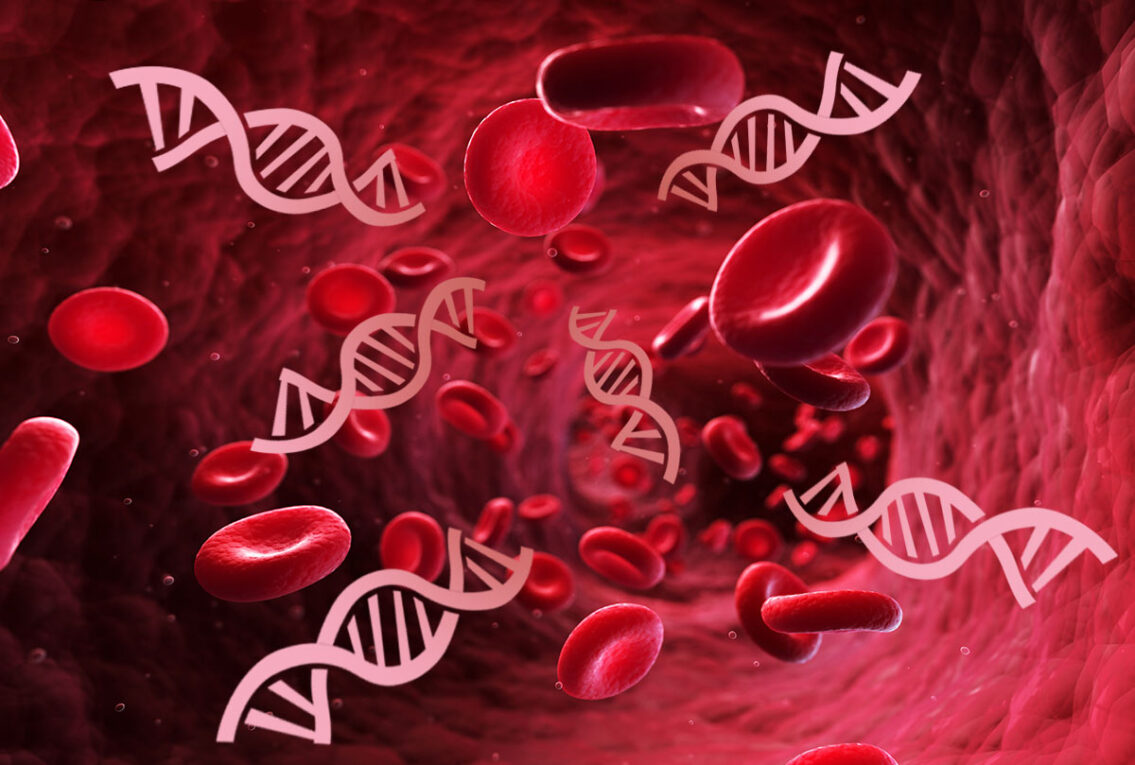Circulating tumor DNA (ctDNA) has emerged as a promising new tool in the fight against cancer. This cell-free DNA that circulates in the bloodstream contains a wealth of information that can be leveraged for early cancer detection, monitoring treatment response, and developing personalized treatment plans.
What is ctDNA?
Circulating tumor DNA, also known as cell-free tumor DNA or liquid biopsy, refers to DNA fragments that are shed by tumor cells into the bloodstream. During the process of metastasis, proliferation, and cell death, tumor cells release DNA fragments into the blood circulation. These ctDNA fragments can be captured from a simple blood sample and analyzed. ctDNA provides a snapshot of the genomic alterations within the tumor without having to obtain a tissue biopsy.
Tracking Genetic Mutations
One of the most promising applications of ctDNA is tracking genetic mutations in cancer patients. Analyzing ctDNA allows researchers to detect mutations that are driving tumor growth and metastasis. By longitudinally monitoring ctDNA levels and mutation profiles, doctors can gain insights into how a patient’s cancer is evolving in response to treatment. This non-invasive tracking may help guide treatment decisions and detect relapse earlier than traditional imaging methods. Several studies have demonstrated that ctDNA can detect residual disease and early relapse with high sensitivity.
Early Detection Potential
Given that Circulating Cell-Free Tumor DNA can be isolated from blood samples, it holds great promise for developing non-invasive approaches to early cancer screening and detection. Researchers are exploring whether analyzing ctDNA signatures can detect various cancer types at earlier, more treatable stages. Some early ctDNA detection studies have successfully differentiated patients with cancer from healthy individuals. As the technology improves, ctDNA analysis may provide a simple blood test that could be incorporated into routine cancer screening guidelines. This would represent a tremendous advance over current invasive tissue biopsy-based screening methods.
Monitoring Treatment Response
Monitoring ctDNA levels is also proving useful for evaluating how patients are responding to systemic cancer therapies like chemotherapy, immunotherapy, and targeted drugs. Several studies have found that declines in ctDNA after initiating treatment correlate with tumor shrinkage seen on imaging and patient outcomes. Conversely, rising ctDNA during or after treatment can signal growing residual disease or relapse before it is detectable by standard methods. This could allow physicians to intervene earlier by switching treatments. ctDNA monitoring also holds promise for personalizing cancer maintenance therapies.
Overcoming Tumor Heterogeneity
One of the major challenges in targeted cancer treatment is tumor heterogeneity – the existence of multiple co-existing genetic clones within a tumor and across metastatic sites in individual patients. ctDNA analysis provides a comprehensive picture of the heterogeneous mutations present across a patient’s entire disease burden. This overcomes one of the key limitations of tissue biopsy which provides information from only a small region of the tumor. Molecular profiling of ctDNA allows physicians to target the full spectrum of a patient’s disease-driving alterations and adapt treatment strategies accordingly. This personalized approach may maximize the benefit of precision oncology approaches.
Technical and Analytical Challenges
While ctDNA analysis holds immense potential, there are some technical challenges that must still be addressed before it can be widely implemented in clinical practice. Given that ctDNA fragments comprise only a small fraction of total cell-free DNA in the blood, highly sensitive assays are required to accurately detect cancer-specific aberrations. Distinguishing tumor ctDNA from normal cell-free DNA fragments also presents analytical difficulties. Large, comprehensive studies are still needed to validate the clinical utility of ctDNA for various cancer types and applications. Advances in sequencing technologies, bioinformatics, and machine learning are helping to overcome these hurdles to realize ctDNA’s full potential.
Circulating tumor DNA shows significant promise as a non-invasive genomic profiling tool. ctDNA analysis enables tracking cancer evolution, early detection, monitoring treatment response, detecting residual disease, and developing personalized treatment strategies. As the technological and analytical aspects of ctDNA analysis continue to advance rapidly, it has the potential to transform how cancer care is delivered in the future. ctDNA holds the key to more precise, individualized management across the entire cancer care continuum from screening and early detection to treatment selection and monitoring. Widespread clinical adoption will require more validation studies, but ctDNA is undoubtedly a goldmine for current and future cancer research efforts.
*Note:
1. Source: Coherent Market Insights, Public sources, Desk research
2. We have leveraged AI tools to mine information and compile it

